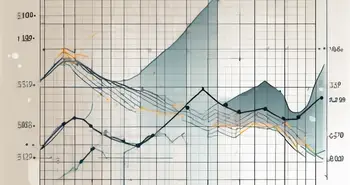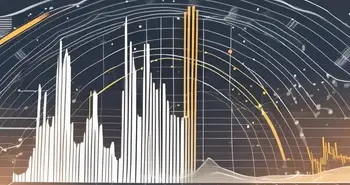What Is Options Trading: A Comprehensive Guide

Options trading is an exciting and lucrative investment strategy that allows individuals to participate in the financial markets. If you're interested in exploring this strategy but don't know where to start, you've come to the right place. In this comprehensive guide, I will walk you through the basics of options trading, explain key concepts, and highlight the risks and rewards involved.
Understanding the Basics of Options Trading
Before we dive into the specifics, let's start with a brief definition and explanation of options trading. In essence, options trading involves buying and selling contracts that give you the right, but not the obligation, to buy or sell an underlying asset at a predetermined price (known as the strike price) within a specified time frame (referred to as the expiration date).
Options trading is particularly valuable because it allows you to speculate on the direction of the market, hedge existing positions, and potentially generate income. It provides flexibility and leverage that can amplify your gains while managing risk.
Definition and Explanation of Options Trading
Options trading is a financial derivative that grants the buyer the right, but not the obligation, to buy or sell an underlying asset at a specified price within a specific period. These assets can include stocks, bonds, commodities, or even currencies.
For example, let's say you're bullish on a certain stock and believe its price will rise in the near future. Instead of buying the stock outright, you could purchase a call option contract, which would give you the right to buy the stock at a predetermined price within a fixed period. If the stock price does indeed increase, you can exercise your option and make a profit.
The Importance of Options Trading in the Financial Market
Options trading plays a crucial role in the financial market as it provides opportunities for investors to manage risk and speculate on market movements. It allows individuals to hedge their positions, protecting themselves against potential downturns and minimizing losses.
Additionally, options trading can provide income through writing options contracts, also known as selling options. By selling options, you collect premiums and can benefit from time decay and market stability.
Furthermore, options trading is not limited to individual investors. Institutional investors, such as hedge funds and investment banks, also actively participate in options trading to enhance their portfolio strategies and generate returns for their clients.
Options trading is a complex field that requires a deep understanding of market dynamics, financial instruments, and risk management techniques. Traders need to analyze market trends, assess the volatility of underlying assets, and make informed decisions based on their expectations of future price movements.
Moreover, options trading is not just about buying and selling contracts. There are various strategies that traders employ to maximize their profits and minimize their risks. These strategies include buying call options, buying put options, selling call options, selling put options, and combinations of these strategies.
Options trading also involves the consideration of factors such as time decay, implied volatility, and the Greeks (delta, gamma, theta, and vega). These factors affect the pricing and behavior of options contracts, and traders need to take them into account when making trading decisions.
Furthermore, options trading is not limited to traditional stock exchanges. There are also options markets for other financial instruments, such as futures contracts, exchange-traded funds (ETFs), and even cryptocurrencies.
In conclusion, options trading is a versatile and dynamic field that offers a wide range of opportunities for investors. It allows individuals and institutions to manage risk, speculate on market movements, and potentially generate income. However, it is important to approach options trading with caution and to thoroughly understand the underlying assets, market dynamics, and risk management strategies involved.
Types of Options Trading
Now that you have a basic understanding of options trading, let's explore the different types of options available:
Call Options and How They Work
A call option gives the buyer the right to purchase an underlying asset at the strike price before the expiration date. Call options are typically used when an investor expects the price of the underlying asset to rise. They provide the opportunity to profit from an increase in the asset's value with a limited initial investment.
When an investor purchases a call option, they are essentially betting that the price of the underlying asset will go up. If the price does indeed rise above the strike price, the investor can exercise the option and buy the asset at a lower price, allowing them to make a profit. However, if the price of the asset does not rise above the strike price, the investor may choose not to exercise the option and let it expire worthless, resulting in a loss of the initial investment.
Call options can be a valuable tool for investors looking to take advantage of potential price increases in a particular asset. They offer the ability to control a larger amount of the underlying asset with a smaller initial investment, allowing for potential higher returns.
Put Options and Their Functionality
On the other hand, put options grant the buyer the right to sell an underlying asset at the strike price before the expiration date. Put options are often used as a hedging tool or to speculate on a decline in the price of the underlying asset. They allow investors to profit from a decrease in the asset's value without actually owning it.
When an investor purchases a put option, they are essentially betting that the price of the underlying asset will go down. If the price does indeed fall below the strike price, the investor can exercise the option and sell the asset at a higher price, allowing them to make a profit. However, if the price of the asset does not fall below the strike price, the investor may choose not to exercise the option and let it expire worthless, resulting in a loss of the initial investment.
Put options can be a useful tool for investors looking to protect their existing investments or profit from potential price declines. By purchasing put options, investors can limit their downside risk and potentially offset losses in their portfolio if the price of the underlying asset decreases.
Key Terminology in Options Trading
Before diving further into options trading, it's essential to familiarize yourself with some key terminology:
Intrinsic Value and Time Value
The intrinsic value of an option is the difference between the current price of the underlying asset and the strike price. It represents the real value of the option if it were exercised immediately. Time value, on the other hand, is the additional value assigned to an option due to the potential for the underlying asset's price to change before expiration.
Strike Price and Expiration Date
The strike price is the predetermined price at which the underlying asset can be bought or sold. It's important to choose the right strike price when buying options since it will determine your potential profit or loss. The expiration date is the date at which the option contract becomes invalid. It's crucial to understand the time frame within which you can exercise your option.
The Process of Options Trading
Now that you're familiar with the basics and key terminology, let's discuss the process of options trading:
Buying and Selling Options
Options can be bought and sold on various exchanges or through brokerage accounts. When buying options, you pay a premium for the right to buy or sell the underlying asset. If you choose to sell options, you collect premiums and take on the obligation to potentially buy or sell the asset if the option is exercised.
Executing an Options Trade
To initiate an options trade, you need to open a brokerage account and fund it with the appropriate capital. Next, you must conduct thorough research and analysis to identify potential trades that align with your investment goals. Once you've identified a suitable option, you can place your trade through your chosen brokerage platform.
Risks and Rewards of Options Trading
As with any investment strategy, options trading comes with its own set of risks and rewards:
Potential Risks Involved in Options Trading
One of the primary risks of options trading is the possibility of losing your entire investment if the underlying asset does not move in the expected direction. Additionally, options have expiration dates, and if the price of the underlying asset fails to reach the strike price before expiration, the option may become worthless.
Possible Rewards and Profitability
Options trading can potentially provide substantial rewards and profitability. By accurately predicting market movements, you can generate significant returns on your initial investment. Additionally, options trading allows you to control a larger amount of the underlying asset with a smaller upfront cost, thus amplifying your gains.
As an expert in options trading, I have personally experienced the benefits and potential pitfalls of this investment strategy. One piece of advice I would like to share is to always ensure proper risk management and diversification. Devoting time to understanding the intricacies of options trading and consistently educating yourself about market trends and strategies will help navigate the risks and maximize the rewards.
FAQ: Frequently Asked Questions
What is the purpose of options trading?
Options trading allows individuals to speculate on market movements, hedge existing positions, and potentially generate income.
How does options trading work?
Options trading involves buying and selling contracts that grant you the right, but not the obligation, to buy or sell an underlying asset at a predetermined price within a specified time frame.
What are call options?
Call options give the buyer the right to purchase an underlying asset at the strike price. They are used when an investor expects the price of the underlying asset to rise.
What are put options?
Put options grant the buyer the right to sell an underlying asset at the strike price. They are used to hedge positions or speculate on a decline in the asset's price.
What are the risks of options trading?
Options trading carries the risk of losing your entire investment if the underlying asset does not move as expected. Additionally, options have expiration dates, and if the price fails to reach the strike price before expiration, the option may become worthless.
What are the rewards of options trading?
Options trading offers the potential for substantial rewards and profitability. By accurately predicting market movements, you can generate significant returns on your initial investment.
With this comprehensive guide, you are well-equipped to start exploring the exciting world of options trading. Remember to approach it with caution, educate yourself continuously, and seek professional advice if needed. Happy trading!
Ready to take your options trading to the next level? Discover the future of investing with Morpher, the revolutionary trading platform that leverages blockchain technology for a seamless and efficient trading experience. With Morpher, you can enjoy zero fees, infinite liquidity, and the ability to engage in fractional investing and short selling across a multitude of markets. Experience the safety and control of a non-custodial wallet, the potential of 10x leverage, and the innovation of Virtual Futures. Don't miss out on this unique trading opportunity. Sign Up and Get Your Free Sign Up Bonus today and join the trading revolution with Morpher!

Disclaimer: All investments involve risk, and the past performance of a security, industry, sector, market, financial product, trading strategy, or individual’s trading does not guarantee future results or returns. Investors are fully responsible for any investment decisions they make. Such decisions should be based solely on an evaluation of their financial circumstances, investment objectives, risk tolerance, and liquidity needs. This post does not constitute investment advice.

Painless trading for everyone
Hundreds of markets all in one place - Apple, Bitcoin, Gold, Watches, NFTs, Sneakers and so much more.

Painless trading for everyone
Hundreds of markets all in one place - Apple, Bitcoin, Gold, Watches, NFTs, Sneakers and so much more.









